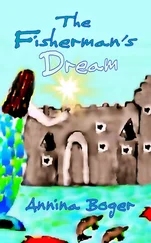The Centre was started in 2009 and hosts 28 children with five employees, including the founder, Ms. Teresia Njeru. It sits on about half an acre of land (about half a football pitch or eight tennis courts). It has one main house, two separate structures that act as a therapy room and a classroom, and a cow shed. The main house is where the children spend most of their time. It has a living room, three bedrooms, a toilet, a bathroom and a kitchen. Since the number of bedrooms is less than the number of children being hosted by the Centre, the living room acts as a bedroom too for some of the children. There are beds in the living room for this purpose. The walls are cream in colour and plain. The home was not designed to host disabled children and due to limited funding, not much has been done to make the home more suitable for the children.
The idea behind Total Rehab came after a survey on children with disabilities done in Nairobi in 2009 3. Through the survey it was revealed that most children with disabilities were stigmatised and some were locked up in the house. Disability is still believed to be a curse in some communities in Kenya whereby instead of being viewed as something that can occur naturally, it is credited to some evil spiritual forces or as a negative consequence or punishment to the parents for some shortcomings in their spiritual lives. In addition to that, disability can also be viewed as a result of sorcery. Because of this, some parents are afraid to let the public know that they have disabled children, since they will be perceived as people who are experiencing some sort of spiritual misfortune. Most families therefore feel ashamed of the fact that they have disabled children and hence prefer to hide them. Most of these beliefs come from lack of information and exposure. The other reason for this is poverty in the community. Disorders such as autism and cerebral palsy are not widely known, especially among poor people, hence they do not know how to handle these cases when they have children with these conditions. The expenses that accompany bringing up a disabled child are also a hindrance to parents, thus causing them to hide their children.
Nevertheless, I would like to point out that there are institutions that champion the rights of disabled children in Kenya and they are key in creating awareness. The Kenyan government has also made efforts to ensure that the rights of these children are upheld through the formulation of policies that ensure the well-being of disabled children. For instance, the Kenyan constitution is very clear about the rights of persons with disabilities. It states that a person with any disability is entitled to be treated with dignity and respect and to be addressed and referred to in a manner that is not demeaning; to access educational institutions and facilities for persons with disabilities that are integrated into society to the extent compatible with the interests of the person; to reasonable access to all places, public transport and information; to use Sign Language, Braille or other appropriate means of communication; and to access materials and devices to overcome constraints arising from the person’s disability.
Ms. Teresia Njeru, a Kenyan lady in her 30s, was among the people conducting the survey, hence she felt the need to act, and as a consequence started the home in 2009. She is originally from Meru County, in eastern Kenya. Meru County has a population of about 1.3 million inhabitants who predominantly speak Kimeru in addition to the two main languages in Kenya, that is, Kiswahili and English. Meru Town acts as the administrative and commercial centre of the county with the main activities being agriculture and commerce. Currently Ms. Teresia lives in Nairobi, the capital city, where Total Rehab Centre is located. She is a teacher trained in special needs education and always had a passion for helping children with disabilities. Her decision to start the Centre was a selfless act, especially considering that she did not have any guaranteed source of funding, only her strong conviction that she needed to help the children. She is an outstanding lady with a big heart. From the moment I met Teresia, her selfless love for the children was evident. It is impossible to interact with her and fail to be inspired and challenged to live for others more than we live for ourselves.
The majority of the children hosted by the institution have cerebral palsy, a group of disorders affecting a person’s ability to move and which can affect body movement, muscle control, muscle coordination, muscle tone, reflex, posture and balance. The Centre caters for children (from 3 to 25 years old) with special needs and parents/guardians of affected children and also provides information to the general public and learning institutions. The mission of Total Rehab is to empower children with disabilities with skills and competencies to enable them to achieve optimal performance in their daily activities through provision of quality care and rehabilitation services. They achieve this through providing therapy, promoting awareness, and advocacy. Services which the Centre aims to offer include: day-care and outpatient services, specialised medical support, boarding services, nutritional support, occupational therapy and physiotherapy, among others.
The Centre mainly offers residential services rather than outpatient services to the children, hence all of the children currently live in the Centre. Their stay follows the Kenyan school calendar where the children are hosted throughout the year with about four weeks’ break in each of April, August and December. During the break, the children who have responsible parents or guardians are usually picked up and they spend this time at their homes. Those with no parents or responsible guardians remain at the Centre.
A normal day at Total Rehab Centre begins as early as six a.m. with preparation of breakfast. Due to limited staff members, everyone fills in when it comes to taking care of the children. As breakfast, which is usually porridge to feed more than 30 people, is prepared the children are woken up one by one to take a bath. Most of the children cannot bathe themselves so they are assisted by their caregivers. As with most activities in the Centre, bath time is not an easy time since the bathrooms are not designed for people with disabilities. This means that the caregivers have to support most of the children as they wash them. Bath time usually lasts for about two hours. After the children have had their bath and are dressed, breakfast follows. Most of the children need help to feed themselves and at times it may take up to an hour to feed one child. It was during these meal times that I was able to establish a bond with the children. I learnt patience and got the chance to give absolute care to someone who needed it. I also learnt to be sensitive to the children and to listen to them through observing their reactions and understanding how they communicated. For example, after half an hour of feeding I would think a child had had enough but, once I took the plate away, they would begin to cry meaning they had not had enough.
Feeding usually lasts until eleven a.m., depending on the number of volunteers present. As the children are fed, there are some people doing the laundry. Since the Centre does not have a washing machine, all the children’s clothes are hand washed, an activity that could take up to three hours daily. The children are then carried outside to bask in the sun as their rooms are cleaned. By this time, lunch is already cooking. At about one p.m. meal time begins again and goes on until about 2:30. There are some days during the week when the volunteer physiotherapist comes to have sessions with the children. Dinner begins at six p.m. and by around eight p.m. the children go to bed. The following day the cycle continues. In the event that one of the workers is absent, a day’s programme can be immensely affected since the human resources are very limited. When there are volunteers, things run smoothly, but lack of them throws the Centre into chaos, in that you have longer meal times, which delays every other activity.
Читать дальше




![Serg Aill&Lex Lux - Идефикс. Жажда силы [СИ]](/books/422633/serg-aill-lex-lux-idefiks-zhazhda-sily-si-thumb.webp)







